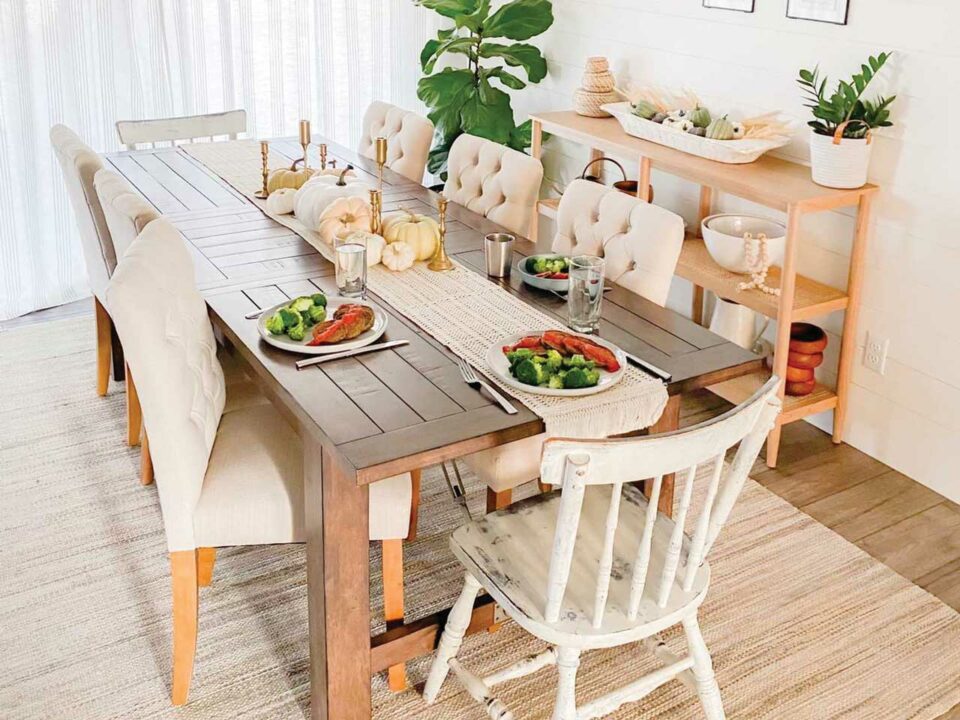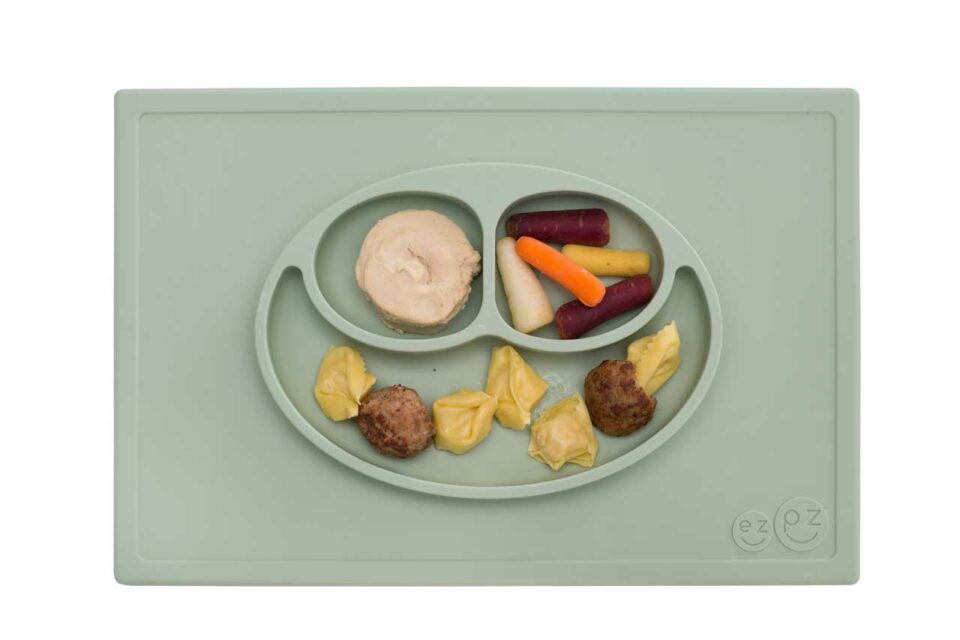It can be hard to muster up the energy to make family dinners happen after a long day, but sharing a meal with your crew is an important part of your overall well being. Anne Fishel, Ph.D., co-founder and executive director of The Family Dinner Project, says that the power of family meals lies in this: When people eat together they have a reliable opportunity to understand each other more and feel more connected.
“Kids who dine with their parents feel less stress, feel more known by their parents, and feel that they have a better relationship with them,” Fishel says. “This sense of connection provides an important seat belt on the often rocky road of childhood and adolescence.”
So how can you make meaningful mealtimes happen? We pulled inspiration from Eat, Laugh Talk! The Family Dinner Playbook and local Colorado families to find out how to craft mealtimes that serve up more fun than stress.
De-Stress Dinner
The main ingredient to making dinnertime enjoyable: Don’t overthink it. An elaborate meal isn’t required in order to sit down with your fam. Even if you get takeout or serve something as simple as sandwiches, it’s making the conscious effort to be together that counts.
You also shouldn’t expect everything to go perfectly. “I think the key to making dinner fun is picking your battles,” says Kaylee Madrid, a mom and blogger from Parker. “Every child is different and not all will sit perfectly still for dinner or always eat everything on their plate, so I try to just let it go.” Putting less focus on the little things automatically makes it more fun.
Recruit Helpers
Early evenings are often when everything seems to fall apart. Lean into the chaos and rely on helping hands to make dinner happen. Can your toddler wash some veggies? Can your tween grate cheese or slice potatoes? “I try to involve my three-year-old with the prep work, which he loves,” says Dana Ford-Buerger, a mom of two from Denver. “He salts and peppers the food, stirs when needed, and he even helps clean up messes—train them young.”
If meal prep is your thing, try to find a way to involve your kids in another process. Jessi Fowler, a mom of five from Fort Collins, says her kids are responsible for handling other elements of mealtime each night. “I love my kids being a part of the process, whether it’s setting the table or doing dishes afterwards, everyone plays a part,” says Fowler.
Rallying some extra hands will not only be of help to you, but it may also encourage your kids to be more engaged and willing to try new foods. “Remember that when kids contribute to family meals, whether it’s with choosing the recipe, compiling a grocery list, stirring the soup, or clearing the dishes, they become stakeholders who are more likely to eat the food and engage at the table,” says Fishel.
Consider the Setting

Creating a cozy dining setup will make your space feel more welcoming, and it might even score you a few more minutes at the table. Beth Armijo, owner of Armijo Design Group, an interior design firm in Denver, suggests dining chairs that are comfortable for kids and easy to clean, like ones made with vinyl or leather. Go for armless stools with back support if your family tends to eat at a countertop or island. They are easier for kids to get in and out of on their own.
When it comes to your tabletop, Kaylee Madrid and Rachel Hoback, two moms from Colorado and co-bloggers of Sprucing Up Mamahood, steer clear of tablecloths and decorative placemats. “Table runners tend to stay cleaner because they’re in the middle of the table,” Madrid explains. If you want to add a decorative element, place a big candle or dried floral arrangement in the center of your table. You can also add seasonal touches around the holidays.
While a rug can help anchor your dining space, it can also fall victim to spaghetti sauce stains and mushed up broccoli. Source an inexpensive rug to reduce worries about spills, or look for an easy-to-clean option. Hoback has a jute rug in her dining room and loves that it’s low-maintenance. “It has a lot of texture so it hides stains well, cleans easily, and has a low pile so crumbs don’t get trapped in it,” she says.
Start Traditions
Sharing traditions around the table can be exciting for kids. It can also help them understand what to expect each night, and encourage them to stay present during their meal. The beauty of mealtime traditions is that you can make them entirely your own.
Some low-key dinner rituals to try: let your kids pick their plates, light a candle at the beginning of your meal, take turns reading from a short book, or set up food-related theme nights.
Disconnect From Tech
Nancy Ruiz, the blogger behind Latina Style Co and a mom of one from Erie, looks forward to dinner with her family because they limit the distraction of electronics. In this fast-paced world, and especially with so many parents working from home, it can be tempting to check an email or reply to a text at the table, but it’s good to set boundaries and carve out time to connect with family.
It’s not just about phones, there are also benefits to turning off the TV. “Research suggests that kids tend to eat more calories and fewer fruits and vegetables when the TV is on,” Fishel says. “And when the TV is on, or when family members are constantly checking their gadgets, it detracts from everyone feeling that they are important and worth listening to.”
If your family is struggling to put their phones away, try making a designated “tech box” that you put your devices in before mealtime starts. You can also put TV remotes in this box and require that everything stays tucked away until after dinner.
Remember Your “Why”
If you find it stressful to prioritize family meals, think about why they’re important to you. When you acknowledge why it matters, it will be easier to refocus your mindset and make it happen. Once you get into a mealtime routine, you’ll have something to look forward to at the end of each day, and your kids will have warm memories of their time around the table.
Dish Up Wisely
These three finds serve up dinner to different age groups—without sacrificing style.
• Try Bamboo
Madrid and Hoback love these WeeSprout Bamboo Toddler Plates because they’re durable alternatives to plastic, and they won’t shatter if they’re dropped. Another perk: They’re dishwasher-safe, which is a must for quick clean up.

• Go Chip-Proof
These dinner plates from Corelle look delicate and upscale, but they hold up to rough use surprisingly well. After run-ins with the sides of kitchen cabinets and accidental bumps against the dishwasher, they’ll still look as good as new.

• Stick to Sectionals
If your kid is picky about having their food touch, try using a plate with sections, like the EZPZ Happy Mat. Sectional plates can also teach kids how to recognize the different food groups on their plate.

6 Dinner Games That Will Get Kids to the Table
- Two Truths and a Tall Tale
Each person tells two stories about the day that actually happened and one that is made up. Then, everyone tries to guess which one is fiction. - Best and Worst
Ask each person sitting at the table to share the best and worst part of their day, then talk about how tomorrow could be better. - Would You Rather
Keep your kids giggling and engaged with this game of outrageous options. Ask things like: Would you rather be a spoon or a fork? Would you rather climb a mountain or explore a cave? - Create a Conversation Jar
Download conversation starters from The Family Dinner Project website or make up your own. Some might include: What superpower do you wish you had? If you could have a character from a book or movie as a best friend, who would it be? What is your first or favorite memory? Print the questions on slips of paper and drop them in a jar on the dinner table. Pick one each night. - Name That Dish
Encourage kids to make up fun names for their dishes, then have your family vote for which was best. - Play Restaurant
Feed your child’s imagination at the table by letting them be the waiter and take your dinner “order.” Older kids can serve up the plates.





